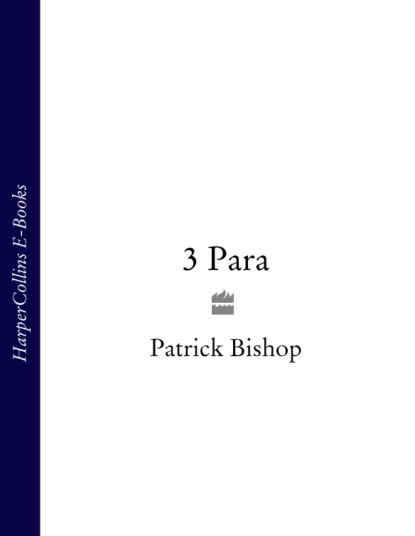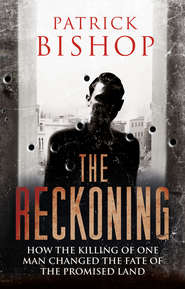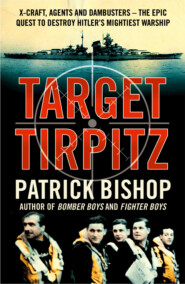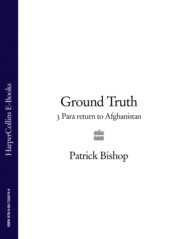По всем вопросам обращайтесь на: info@litportal.ru
(©) 2003-2024.
✖
3 Para
Настройки чтения
Размер шрифта
Высота строк
Поля
‘B’ Company was commanded by Giles Timms, a blunt, cheerful fitness fanatic, who had been destined since adolescence for military life. He joined the Combined Cadet Force of his public school. After learning of the army sholarship scheme, ‘everything I lived and breathed from then on was geared to getting into the army’. He joined 4 Para, the reserves, as a private soldier while at university. The artillery sponsored him through Sandhurst, ‘but my allegiance was really to the Parachute Regiment’. It was only at the last minute that he told his sponsors that he would not be joining them. ‘I got quite a hard time for that, for disloyalty. [But] you have got to be true to your own ambitions and I wouldn’t have been happy in the Gunners.’
‘C’ Company’s OC, Paul Blair, known as Paddy, was a soft-spoken, good-looking Ulsterman with a gentle, courteous manner. He did a four-year business course before deciding that office life was not for him and set off for Sandhurst in July 1995. Cadets are required to put down a first and second choice of regiment they want to join when they pass out. ‘I was very much, it’s the Parachute Regiment or nothing,’ he remembered.
Adam Jowett, who commanded Support Company, joined the Paras from the Grenadier Guards and served with them in Kosovo and Sierra Leone. He was working in a staff job when the word came through that 3 Para were likely to be sent to Afghanistan but wangled his way out of it to go with them. Jowett was the most reserved of the company commanders, but a robust soldier when the time came.
For all their combined experience, in the spring of 2006 there were only three men in 3 Para who could claim to have had real experience of a proper war. These were the last remaining members of the battalion who had served in the Falkands campaign. The intervening years had been spent in worthy but uninspiring deployments that hardly matched the expectations of 3 Para’s members when they joined up. As they prepared to leave their drab headquarters in Colchester for the burning plains, soaring mountains and lush river valleys of Helmand province, the atmosphere was charged with the premonition that things were changing. 3 Para were about to get what they wished for.
3 (#u0c01a37c-2577-507e-9b05-956815bb76c6)
‘The Lawless Province of Helmand’ (#u0c01a37c-2577-507e-9b05-956815bb76c6)
On 26 January 2006 Defence Secretary John Reid announced to the House of Commons that British troops would be sent to Helmand province in the spring. The decision caused immediate controversy. Britain was already deeply committed in Iraq. Pessimists recalled the history of British military interventions in Afghanistan. They raised the grim precedents of the First and Second Afghan Wars and retold the story of the retreat from Kabul in January 1842. Of the 16,500 soldiers and camp followers who set off, only a handful stumbled into the safety of Jalalabad. The rest had been killed by the freezing weather and the relentless attacks of Ghilzai tribesmen.
It was not just the British who had come unstuck there. All the might and brutality of the Soviet military had been unable to crush the spirit of a people who, however incapable they might be of living together harmoniously, were united in their hatred of outsiders.
The Paras had known about the deployment for months. Rumours had been circulating since the previous summer and they had been officially ‘warned off’ to prepare to go in August 2005. They were used to false alarms. But this one sounded genuine. For many in the battalion this was the news they had been waiting for all their military careers.
Sergeant Craig Mountford was coming up for thirty-five when the buzz started gathering volume. He had started his working life as an apprentice welder in Stoke-on-Trent but had always liked the idea of army life. He had first heard about the Parachute Regiment through their exploits in the Falklands. He was attracted to them by an early reality TV show, The Paras, which followed a group of recruits from day one of basic training to acceptance or rejection. In 1989, aged nineteen, he joined up. So far, though, his operational experiences had been disappointing. ‘It was really frustrating,’ he said. ‘We weren’t getting a look-in. We were constantly being told – “Right, you are being stood by, you are going to go.” And we never went. This isn’t warmongering. You just want to do your job – go away on operations, to see what it is like, to experience it.’
In the spring of 2003 the second Gulf War seemed to offer great possibilities. In the end ‘it was just a case of securing a couple of oilfields, patrolling in Basra and that was it. We didn’t do any war fighting as such’.
With the news of the Afghanistan deployment, Mountford began to think again that he might finally see some serious action. ‘It was in all the papers. Mad Max country. The lawless Helmand province.’ But by now he was inclined to be sceptical of media prophecies. ‘They said the same about Iraq. Fighting through to Baghdad. Millions were going to be killed. Initially everyone thought it was going to be good, but then it began to die away. We started thinking, “It probably won’t come to anything. It probably won’t happen.”’
Iraq had been an anticlimax for most of those who had been there. Hugo Farmer went to Basra on his first deployment with the Paras in December 2005. He was unlikely to be satisfied with the sort of duties that awaited him. Farmer was twenty-six. He had had a stellar university career, graduating from Bristol with a double first in Chemistry and Law. His first ambition had been ‘to make as much money as possible’. The City snapped him up. It did not take long for him to decide that a career in corporate finance was not for him.
My life was pretty rubbish. There was very little satisfaction and lots of work that seemingly went nowhere, lots of people above me justfying their existence by creating heat and light but not actually doing anything substantial or proper. I would be in the office by eight a.m. Initially it wasn’t too bad. I would be gone by seven p.m. But then I switched teams and it was eleven p.m. You go home, shower, go to bed and you get up and it all happens all over again. You couldn’t guarantee you weren’t going to be in the office at the weekend.
Farmer felt he was ‘becoming a grey man’. He was haunted by the example of one of his colleagues, only a few years older, who had a wife and child and was saddled with the huge mortgage needed to buy the sort of house his status demanded. ‘He was a beaten man,’ he said. ‘He was resigned to the facts.’ There were lots like him, ‘treading the same old boardwalk, just getting richer and fatter and older. I thought to myself, “I need to change tack here. I need to do something interesting.”’
Farmer had no soldiers in his immediate family but knew some from university and thought they were ‘fun-loving, always doing interesting things’. There was a friend of the family who had joined the SAS. He thought to himself, ‘If he can do it then I can.’ A little research told him that 50 per cent of the SAS had started off in the Paras (the figure now is 58 per cent). He left his job even before he had been accepted at Sandhurst. He went there in January 2004, sponsored by the Paras, and arrived at ‘A’ Company under Will Pike in the early autumn of 2005.
Most of the time in Iraq, Farmer led 1 Platoon on patrols along the border with Iran. He found it ‘actually quite interesting’. The only real threat was from IEDs – improvised explosive devices made from artillery shells which the insurgents planted by the roadside and detonated remotely when a patrol passed by. There was an easy way of countering it. The patrols, operated in armoured modified Land Rovers, simply kept off the roads, an easy thing to do in the flat country bordering the Shatt al-Arab waterway which marked the Iraq–Iran frontier.
Their task was to stop Iranians sneaking in bombs, weapons, drugs or any other contraband. The border was long and porous and smuggling was part of the local economy. Farmer thought it ‘a very good introduction as to how to run a platoon on operations … It wasn’t high tempo by any stretch of the imagination but it was a nice way to learn.’ The Paras were also supposed to mentor the Iraqi border security forces. That meant visiting border posts strung along the frontier, ‘making sure they had the right equipment, making sure that they were trained and knew how to run it, and also to give them a warm fuzzy feeling that they were being looked after and that what they were doing was important’.
Iraq did not prove an uplifting experience for many in 3 Para. The Iraqis themselves seemed feckless and ungrateful. Martin Taylor had, like Farmer, turned his back on a conventional, modern career. After a media studies degree at Sussex University he spent two and a half years working for a recruiting consultancy and commuting to London from Kent every day. His family and friends were surprised when, restless with his life, he started talking about the army. ‘But the more I looked into it the more I heard people saying, “I can see you doing that sort of thing.”’ He initially applied for the Royal Artillery but after his second term decided he wanted to join the Parachute Regiment.
He too spent his first operation patrolling the border. Taylor was cheerful, good natured and inclined to think the best of people, but he found it ‘an enormously frustrating chore. For some reason the Iraqis just did not want to help themselves. It was frustrating just watching these guys living in squalor.’
If there was a lesson to be learned from Iraq, it was how not to do things. Stuart Tootal had watched the aftermath of the triumph of America’s ‘shock and awe’ strategy with an expert eye and increasing dismay. He believed that ‘our approach was fundamentally wrong. We rather assumed that once we’d finished the fighting it was merely a case of putting a new government in place, and we underestimated the difficulty of winning over the consent of the people for that regime. What we failed to achieve from the outset was proper security, and [we] stood by allowing a lot of looting to go ahead. And then we didn’t improve the lot of the people.’
Tootal’s background in counter-insurgency studies convinced him that there was much in Britain’s imperial past that could be applied to the present. He was impressed with the example of General Sir Gerald Templer, the high commissioner appointed by Churchill in 1952 to find a solution to the communist uprising known as the Malayan Emergency. It was something he shared with another British officer, Lieutenant General David Richards, who had been appointed commander of ISAF (the International Security Assistance Force in Afghanistan), which was due to take over the whole NATO (North Atlantic Treaty Organisation) operation in Afghanistan from the Americans. Templer had wielded complete control of every aspect of military and civilian life in Malaya and had devised an intricate committee system that integrated counterinsurgency operations with the reconstruction effort. He once declared: ‘the answer lies not in pouring more troops into the jungle, but in the hearts and minds of the people’, thereby coining a phrase that would echo through counter-insurgency operations ever after.
The political situation in Afghanistan, which had a democratically elected government under President Karzai, would not allow such overt control. But there was one aspect of Templer’s approach in Malaya which could be applied without offending political sensitivities. This was the application of the ‘ink spot’ theory. It held that the best way of tackling an insurgency was to concentrate on securing specific towns and improving local services, including schools, hospitals, sewerage, water, roads and electricity. Life would then be so good that no one would want to support the rebels and the uprising would wither away.
John Reid had presented the situation in Afghanistan as another emergency. He told the Commons: ‘Whatever the difficulties and risks of this deployment – and I do not hide them from the House or the country – those risks are nothing compared to the dangers to our country and our people of allowing Afghanistan to fall back into the hands of the Taliban and the terrorists. We will not allow that. And the Afghan people will not allow that.’
It was a reassertion of the claim that Afghanistan was the front line in a war whose effects, if it went wrong, would be felt painfully in the cities of Britain. That had been the argument for invading Afghanistan in the immediate aftermath of the attacks of 11 September 2001. Since then, Britain had been under pressure from America to supply troops to continue the ongoing NATO mission of stabilisation in Afghanistan. The plan was now moving into its third stage. The ‘easy’ parts had been done. The area around Kabul and the northern and western regions were relatively peaceful. Now it was time to concentrate on the south. Tony Blair answered the call willingly. Since 9/11, he had committed Britain to playing a major role in Afghanistan. His government had proved that it honoured its NATO responsibilities and would do so again, even though the deployment would place a further strain on the country’s stretched military resources.
The south of Afghanistan had been neglected after the fall of the Taliban. In 2002 the Americans and their allies had put most of their effort into squeezing the life out of what remained of the Taliban and al-Qaeda in the mountainous east of the country. Since 2003, their military effort had been diverted into fighting the war, and then the insurgency, in Iraq. The American troops based in Afghanistan concentrated on targeted operations against Taliban and al-Qaeda leaders.
The material help that was promised after the Taliban were driven out of the main cities was slow in coming to the south. There had been little reconstruction and no large-scale deployment of troops to secure the region. In the absence of any Afghan or foreign soldiers to stop them, the Taliban, many of whom had fled to Pakistan after their defeat, began drifting back to Helmand and Kandahar provinces. It was their historic home. Kandahar was the birthplace of the movement. Most Taliban were Pashtun and the provinces were Pashtun territory, part of an ethnic belt that stretched across the border to Pakistan. At the beginning of 2006 they were trying to re-establish themselves through violence and intimidation, murdering and terrorising anyone associated with the government and its NATO coalition allies.
ISAF was led by NATO. It was set up by the United Nations Security Council to secure the country and allow the authority of the central government to take hold. Its operations had begun in the capital, Kabul, and slowly expanded throughout the country in planned stages. Now it had reached stage three – the establishment of Regional Command South.
The British would be part of a multinational force of about nine thousand soldiers. The contributing nations included Canada, Holland and Denmark. The command rotated among the lead nations. The Canadians would be the first to hold it. The battle group’s area of operations would be Helmand, which was in dire need of development but was also the scene of increasingly vigorous insurgent activity.
Defence Secretary Reid made it clear that combating the Taliban resurgence would be one of the battle group’s main tasks. The troops were being sent to ‘deny terrorists an ungoverned space in which they can foment and export terror’. The underlying, long-term aim was to ‘help the people of Afghanistan build a democratic state with strong security forces and an economy that will support a civil society’. In the British area of operations this would be done through the Helmand Provincial Reconstruction Team (PRT), which would work with the military, the British Foreign Office and the Department for International Development (DfID) to deliver a ‘tailored package of political, developmental and military assistance’. The specific mission was to ‘help train the Afghan security forces, to facilitate reconstruction and to provide security, thereby supporting the extension of the Afghan Government’s authority across the province’. This last phrase would come to have a powerful significance when the battle group began their work.
As if this was not enough, there was a further aspect to the mission. Helmand was opium poppy country. Poor farmers relied on the poppy to make a living, selling their crop to local drug lords. The troops, said Reid, would be expected to ‘support international efforts to counter the narcotics trade which poisons the economy in Afghanistan and poisons so many young people in this country’. Nine-tenths of all the heroin on British streets originated in Afghanistan, he claimed. Once again, decisive action in a far-flung place could benefit British society.
It would be claimed later that Reid had presented the mission as a risk-free exercise in nation-building. This was based on an interview he gave to the BBC’s Today programme in April, just as the deployment was beginning. On a crackly line from Kandahar, NATO’s main base in the south, he said that ‘if we came for three years here to accomplish our mission and had not fired one shot at the end of it we would be very happy indeed’.
In the months that followed, as the British mission grew more and more hazardous and shots were fired by the hundreds of thousands, these words would be repeated by critics as evidence of his naivety. In fact the phrase was ripped out of context. Reid had been frank about the risks from the start. In the same interview he declared that ‘although our mission … is primarily reconstruction it is a complex and dangerous mission because the terrorist will want to destroy the economy and legitimate trade, and the government that we are helping to build up’.
The way the task force was structured made it clear that trouble was expected. The Helmand Task Force was drawn primarily from 16 Air Assault Brigade based in Colchester. At its heart was 3 Para, who, as its commander was proud to boast, ‘fight on their feet’. Without air support, however, they could not function. That was to be provided by seven CH-47 helicopters provided by the Royal Air Force. The twin-rotored Chinooks, with their huge lift capacity, were the main workhorses of the task force. They were armed only with three machine guns and needed protection. This was the job of eight Apache attack helicopters from 9 Regiment of the Army Air Corps, which were being deployed for the first time with the British Army. They also played a crucial role in supporting ground troops when they were under attack. Four Hercules C-130 transports would be supplied by the RAF.
The fighting core of the force was 3 Para. They were reinforced by a company from the Royal Gurkha Rifles and a detachment from the Royal Irish Regiment. The Household Cavalry Regiment (HCR) with their Scimitars and Spartans would supply an armoured element. The Royal Horse Artillery’s 7th Parachute Regiment (7 RHA) would contribute a battery of 105 light guns. The operation was supported by a parachute-trained squadron of engineers from 23 Engineer Regiment, units from the Royal Logistics Corps and the Royal Electrical and Mechanical Engineers and medics from 16 Close Support Medical Regiment.
An advance force of engineers were set to go to Helmand ahead of the main deployment to build camps, protected by a company from the Royal Marines’ 42 Commando. By July, about 3,300 troops were expected to be in place in Helmand, excluding the engineers building the camps. The task force could also call on the assistance of American bombers, support and attack helicopters, and other NATO countries were considering offering fighter cover and transport aircraft.
The size of the ‘force package’, as it was called, had been the subject of long debate in London. Men and materiel were in short supply owing to commitments in Iraq. Reid described the deployment as ‘substantial’, and said that it was sufficient to ‘maximise their chances of success and minimise the risks’. The battle group’s senior officers were reasonably content with what they were given, though like all commanders they would always have preferred to have more. But that view would alter as the original mission changed and the force’s responsibilities spread far beyond their original intended area of operations, stretching manpower and resources to the limits. ‘The fact is’, said a senior ISAF commander after the Paras had returned home, ‘that the 3 Para battle group … was woefully insufficient for the tasks that were being laid on it.’
The operational boundaries of the deployment were vague and elastic from the start. Reid said the British were not going ‘because we want to wage war’, and that the military assets were intended ‘to deter and defend ourselves’. But the political and military landscape they were entering made war fighting inevitable. There were several powerful interests seeking to direct their actions, voices that could not be ignored. They were fitting into a multinational force whose members had different agendas. The most important were the Americans, who had little interest in the reconstruction effort and would expect the British to contribute to their campaign to decapitate the Taliban leadership. They would be leant on by Britain’s ally, President Karzai and his representative in Helmand, to expand the government’s authority into the badlands.
It seemed to the Paras themselves, as they made their preparations, that the fact of their presence in Helmand was bound, sooner or later, to provoke a fight with the Taliban. Will Pike emphasised to his company that ‘we were there to enable development, to enable reconstruction and that the military arm was not the decisive thing, but winning the hearts and minds of the people’. When the Paras talked among themselves, however, Pike said, ‘we all knew that it was easier said than done and we were very aware that this operation was probably going to be the most significant thing we had done as a battalion since the Falklands and it was going to involve fighting on a scale we hadn’t seen since then’.
Pike knew Afghanistan from a previous tour – he had served in Kabul with 2 Para in the aftermath of the attacks of 9/11. As he understood it, Helmand was something of a sanctuary for the Taliban. The international military presence was sparse – some Americans engaged in targeted counter-terrorism operations – and the central government weak. The place was essentially run by the same people who ran the narcotics trade. ‘We knew that people were going to oppose the strands of development that we wanted to try and secure,’ he said. ‘So whilst the ferocity of the fighting came as something of a surprise … I don’t think we were under any illusions.’
In their pre-deployment training 3 Para hoped for the best and prepared for the worst. Study days were organised and visiting experts gave lectures on the people, history and customs of Afghanistan. Several soldiers were sent off on crash language courses and everyone was taught a few Pashto phrases for basic interaction with the locals. There were bouts of intensive tactical training but it was hard to recreate the conditions they would be operating in amidst the cold and wet of a British winter.
Early in 2006, however, 3 Para were sent for a month’s training to a much more useful environment – the stony hills and wadis of Oman. ‘Much of the training involved going to mocked-up villages, establishing relations with the locals and displaying a culturally aware attitude to the people they would be dealing with,’ Martin Taylor remembered. ‘Much of it had already been learned in Iraq. We were rehearsing the less aggressive “hearts and minds” side of things.’ But at the same time they were ‘always, always rehearsing what would happen if we came under attack. We trained with helicopter gunship and air support. Among the exercises was a live firing exercise in which the scenario is that you are out patrolling and come under attack from the Taliban who are firing from a strongpoint and you have to go and attack that. The blokes trained really hard and were very fit when they came back.’
While they were in Oman, news trickled down to them of what was going on in Afghanistan. It seemed to confirm their instincts that there was trouble ahead. The reports mainly concerned the Canadians who were in charge of the Kandahar area of operations, the sector next to the Paras’. ‘I was responsible to brief the blokes up,’ said Craig Mountford,
so every night in Oman I would sit down with the company commanders then pass it down to the lads. There were regular reports that someone had been killed in Afghanistan. But it wasn’t the fact that people were being killed. It was how they were killed. I heard one particular story about a Canadian officer who went to one of these “meet and greets” with the locals. He went in, took his helmet off and sat down on the floor to take tea with them. He had a bodyguard with him. But someone came in and stuck an axe in his head. That brought it home to quite a lot of people, I think. People began to step back and think, ‘Bloody hell, this might be something of a fight.’
The question of how to distinguish friend from foe, gunman from civilian, played a large part in preparations. The Paras were taught some likely indicators that would alert them to an approaching suicide bomber: heavy sweating, an absence of body hair, the mumbling of prayers and a refusal to respond to warning shouts were all signs to set alarm bells ringing. In the towns and villages they would be working in there would be many opportunities for making catastrophic errors that could deal fatal damage to the effort to win consent and trust.
Everyone dreaded shooting the wrong person. But they were also extremely uneasy about what would happen to them even if they had made an honest mistake. The spate of judicial actions against soldiers who had got into similar trouble in Iraq had created cynicism and a belief that justice was being bent by political considerations. Tootal gave reassurance that no one would be hung out to dry. ‘The CO was very, very clear about what his approach would be if someone was deemed genuinely to pose a threat,’ said Martin Taylor. As long as a soldier ‘was acting in all honesty and was not misusing his power in any way he would be supported’.
On the other hand, Tootal also left no room for doubt that anyone who abused the local population could expect harsh punishment. He spelled out the difference in a talk to the troops, asking them to imagine that they were patrolling into a village at dusk. Unseen assailants had been shooting at them and they were tense and nervous. Suddenly a boy walks out of an alleyway, holding a shepherd’s crook. In the failing light it looks just like an AK-47 rifle. Someone makes a split-second decision and shoots him dead. Tragic though it is, it is a consequence of the friction of war. In the circumstances there would be an investigation. But if it was shown that the soldier was acting with honest intent he could count on his CO’s support.
If, however, the soldier had seen the boy and was about to shoot him, subsequently recognised his mistake but took him into the alleyway ‘then kicked the shit out of him because he’d been given a good scare, then I’ll have that soldier court-martialled,’ Tootal said.
By the beginning of April 2006 the theorising was over and the practice was about to begin. After years on the sidelines, 3 Para was ready to take to the field. The thought was both alarming and exciting. ‘There is one test that a parachutist wants to take,’ said Nick French, ‘and that is how do you react under fire. Are you going to flinch, are you going to hide or are you going to pass that test? If you do you will leave the army happy.’ In the months ahead they would have many opportunities to try their courage.
4 (#u0c01a37c-2577-507e-9b05-956815bb76c6)











